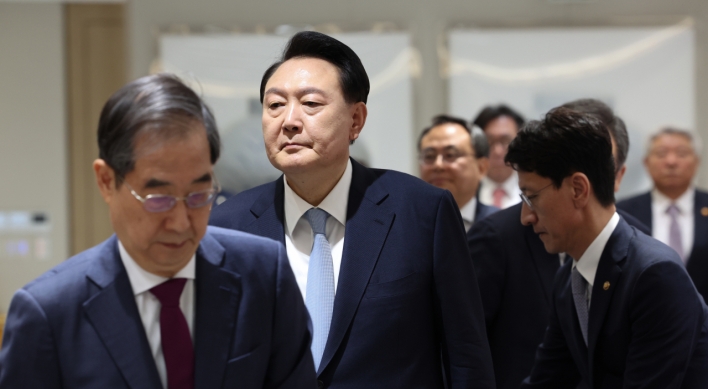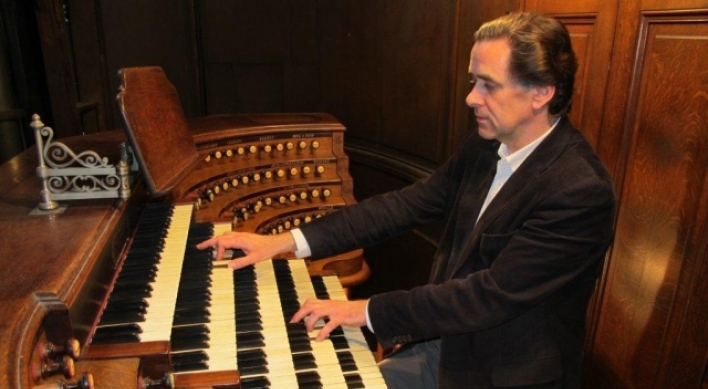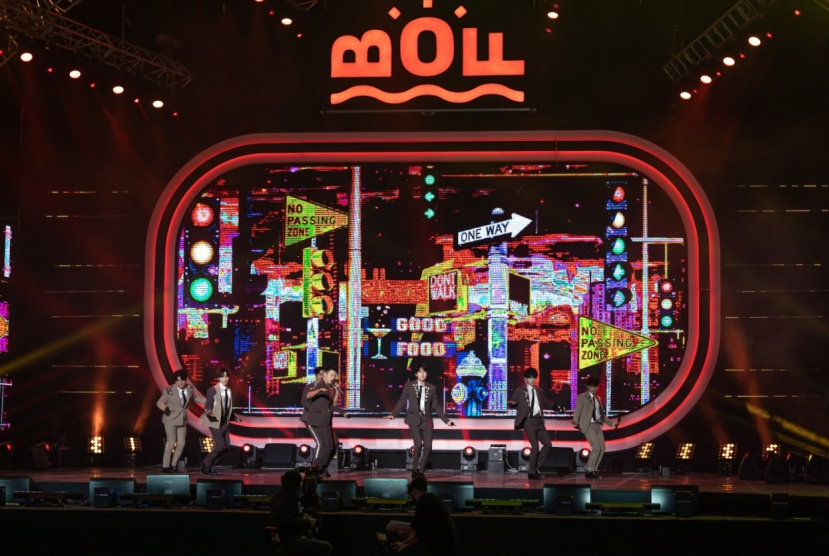About 300 international artists to participate in event, which may miss Chinese co-director due to Beijing’s oppression of dissidents
Ai Weiwei, co-director of the 4th Gwangju Design Biennale, may not be able to attend the show in September but his artwork will.
“Field,” the 1.15 meter tall rectangular installation measuring 7.4 meter by 7.4 meters made with a series of porcelain pipes, which the Chinese artist, architect, curator and activist showcased at 2010 Art Basel will be installed in a special exhibition section at the Biennale.
Ai Weiwei, co-director of the 4th Gwangju Design Biennale, may not be able to attend the show in September but his artwork will.
“Field,” the 1.15 meter tall rectangular installation measuring 7.4 meter by 7.4 meters made with a series of porcelain pipes, which the Chinese artist, architect, curator and activist showcased at 2010 Art Basel will be installed in a special exhibition section at the Biennale.
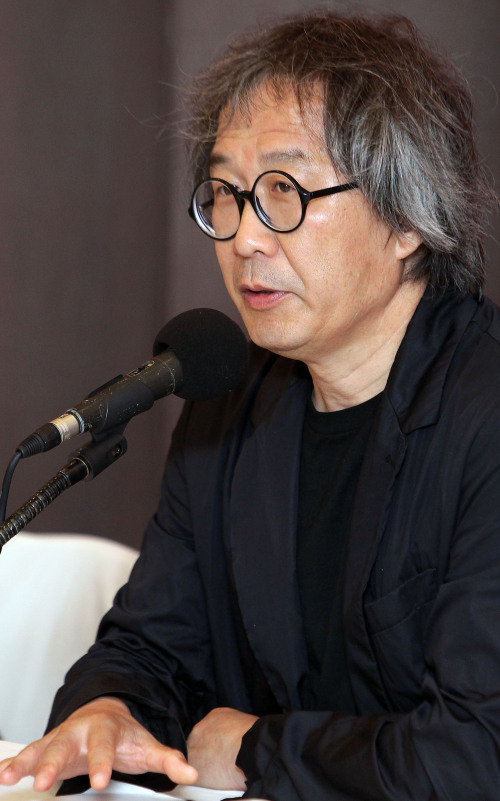
“The section was organized to support the art world of director Ai whose attendance at the Design Biennale’s opening ceremony is unclear,” announced Seung H-Sang, the biennale’s co-director who is a renowned Korean architect, at a press conference held this week.
Ai, currently in Beijing, is banned from leaving China for a year following his release on bail in June after 81 days of detention. He was arrested in early April, an arrest which civic groups all over the world branded as political repression by the Chinese Communist Party. Chinese authorities said he was accused of tax evasion. Ai has been working on the biennale since 2010.
“I am very happy to be out and since I cannot come to meet you, I am very grateful for all the support and concern you have paid to this show. We’re continually working on the art of the design biennale and I’m sure it’s going to be a great one. Hopefully in the future not too far away I can see you,” said Ai in video footage. Ai is still deeply involved in the biennale, said Seung, who said he met the Chinese co-director in Beijing this month.
The biennale will take place from Sept. 2 to Oct. 23 at the Biennale Exhibition Hall and throughout Gwangju Metropolitan City.
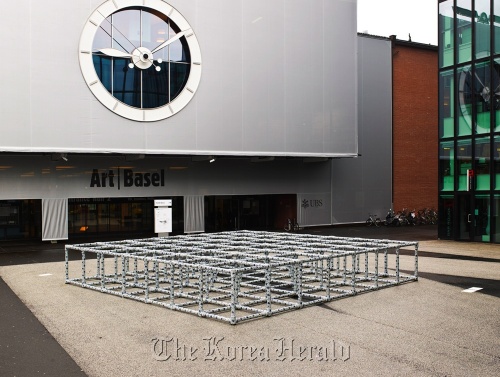
Inspired by Chinese philosopher Lao Tzu’s saying “The way that is the way is not always the way,” the theme of the biennale this year is “DOGADOBISANGDO ― Design is Design is Not Design.” It means that the biennale will reexamine and rename the fundamental issues of design today, said Seung.
“Design in the 21st century is not just about making figures good to look at but plays an expanded role of fertilizing the life and creative grounds. The design field has been subdivided and the roles of designers have become diverse. The biennale will show all of that and unravel today’s communities and the urban ecosystem,“ he said.
Designs by over 300 artists, designers and architects from 40 countries will be presented through six sub themes ― “Thematic,” “Named,” “Unnamed,” “Communities,” “Biennale City,” and “Urban Follies.”
At the “Thematic” section, viewers will find works by 11 designers and design companies from five countries, which directly engage with the main theme of the biennale. U.S. composer Paul D. Miller, a.k.a. Dj Spooky, for example, created media performances “Terra Nova/Sinfonia Antartica” and “The Nauru Elegies: A/Portrait in Sound and Hypsographic Architecture” aiming to alarm the world about the environmental issues.
The “Named” section will present works by 53 established designers and design firms from 16 countries to explore how the name of the designer or brand functions in contemporary culture and the mass-market. Meanwhile the “Unnamed” section will showcase products by 93 relatively less-known designer and companies from 32 countries, challenging the myth of “named” designers.
The “Communities” section will be organized to show designs in different contexts of communities and the “Biennale City” section offers an opportunity to look at the biennale itself as a type of city that constructs relationships between objects, processes and ideas.
“Urban Follies” refers not to a section in the Biennale Exhibition Hall but to a network of 10 small-scale architectural installations along the path of the old city wall of Gwangju. Designed by nine world-renowned architects including Juan Herreros, Florian Beigel and Nader Tehrani, the Follies aim to blend into the site and the community.
For more information on the 4th Gwangju Design Biennale, visit www.gb.or.kr.
By Park Min-young (claire@heraldcorp.com)
“Design in the 21st century is not just about making figures good to look at but plays an expanded role of fertilizing the life and creative grounds. The design field has been subdivided and the roles of designers have become diverse. The biennale will show all of that and unravel today’s communities and the urban ecosystem,“ he said.
Designs by over 300 artists, designers and architects from 40 countries will be presented through six sub themes ― “Thematic,” “Named,” “Unnamed,” “Communities,” “Biennale City,” and “Urban Follies.”
At the “Thematic” section, viewers will find works by 11 designers and design companies from five countries, which directly engage with the main theme of the biennale. U.S. composer Paul D. Miller, a.k.a. Dj Spooky, for example, created media performances “Terra Nova/Sinfonia Antartica” and “The Nauru Elegies: A/Portrait in Sound and Hypsographic Architecture” aiming to alarm the world about the environmental issues.
The “Named” section will present works by 53 established designers and design firms from 16 countries to explore how the name of the designer or brand functions in contemporary culture and the mass-market. Meanwhile the “Unnamed” section will showcase products by 93 relatively less-known designer and companies from 32 countries, challenging the myth of “named” designers.
The “Communities” section will be organized to show designs in different contexts of communities and the “Biennale City” section offers an opportunity to look at the biennale itself as a type of city that constructs relationships between objects, processes and ideas.
“Urban Follies” refers not to a section in the Biennale Exhibition Hall but to a network of 10 small-scale architectural installations along the path of the old city wall of Gwangju. Designed by nine world-renowned architects including Juan Herreros, Florian Beigel and Nader Tehrani, the Follies aim to blend into the site and the community.
For more information on the 4th Gwangju Design Biennale, visit www.gb.or.kr.
By Park Min-young (claire@heraldcorp.com)







![[KH Explains] How should Korea adjust its trade defenses against Chinese EVs?](http://res.heraldm.com/phpwas/restmb_idxmake.php?idx=644&simg=/content/image/2024/04/15/20240415050562_0.jpg&u=20240415144419)





